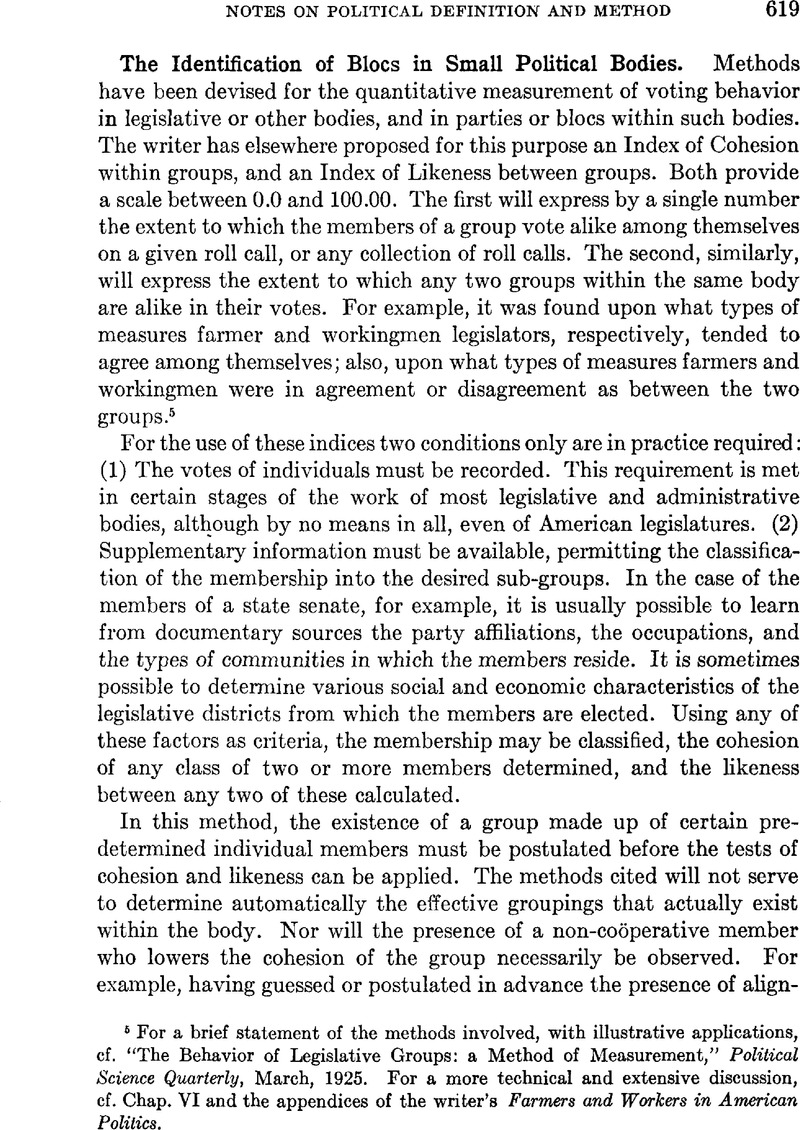Article contents
The Identification of Blocs in Small Political Bodies
Published online by Cambridge University Press: 02 September 2013
Abstract

- Type
- Other
- Information
- Copyright
- Copyright © American Political Science Association 1927
References
5 For a brief statement of the methods involved, with illustrative applications, cf. “The Behavior of Legislative Groups: a Method of Measurement”, Political Science Quarterly, March, 1925 Google Scholar. For a more technical and extensive discussion, cf. Chap. VI and the appendices of the writer's Farmers and Workers in American Politics.
6 The relative agreement would be altered slightly because of the fact that not all members vote on every roll call. It is not, however, possible to say that the revised indexes would be more indicative of the real relationships among the members than are those obtained by omitting the unanimous votes; for less than the total are usually recorded as voting in both cases. This is a factor for which it has been impossible to make allowance in any of the writer's analyses of data of this kind. The attempt to take it into consideration amounts to the inquiry in the case of every absentee: How would he have voted had he been present?
7 Bloc B, composed of five members, might be resolved into its five possible combinations of four members each, although this would serve no practical advantage.
8 I am indebted to Professor H. R. Kemp, of the University of Toronto, who has read this article in proof, for the suggestion that the possible range of its application might be extended by the use of electric sorting machinery. Thus a punch card might be prepared for each roll call or division of the house, the assigned number of each member being punched in one of three columns, e.g., “Aye”, “No”, or “Not Voting”. The combinations of agreement by pairs could then be determined mechanically by the tabulating machine. The technique of “inspection” could not profitably be dispensed with from this point onward, however. Moreover, the rapidity with which the cards could be punched would depend upon the arrangement of the “yes” and “no” votes in the legislative journal. Experiment would be necessary to determine how much labor could be saved by the mechanical sorting and tabulating process.
- 35
- Cited by





Comments
No Comments have been published for this article.